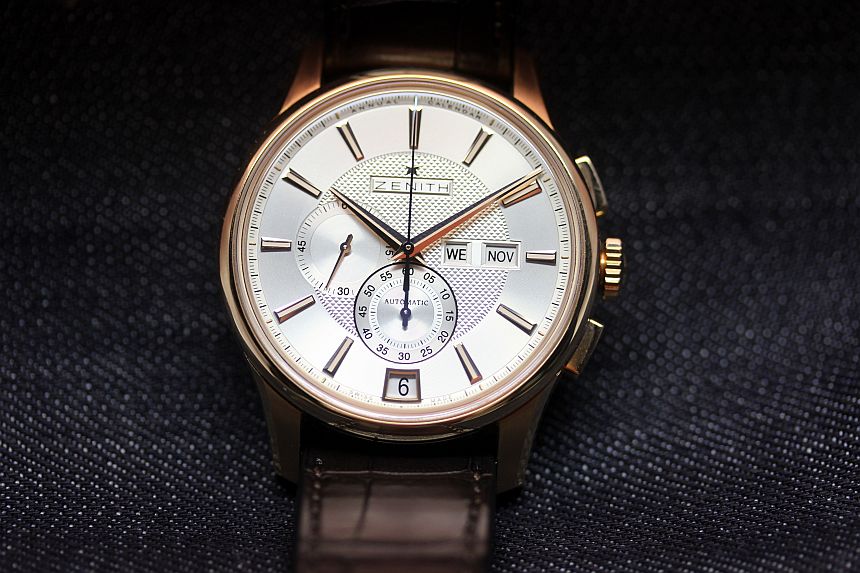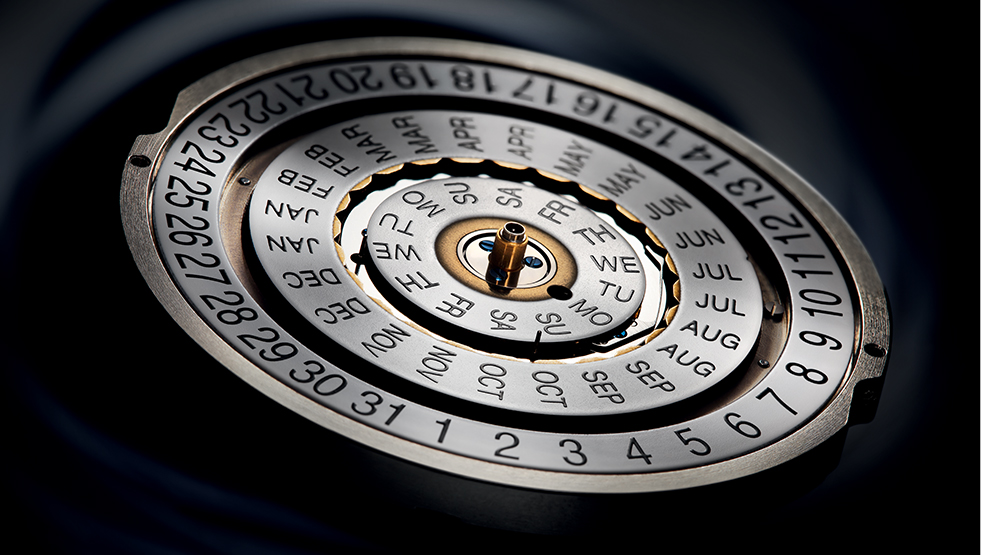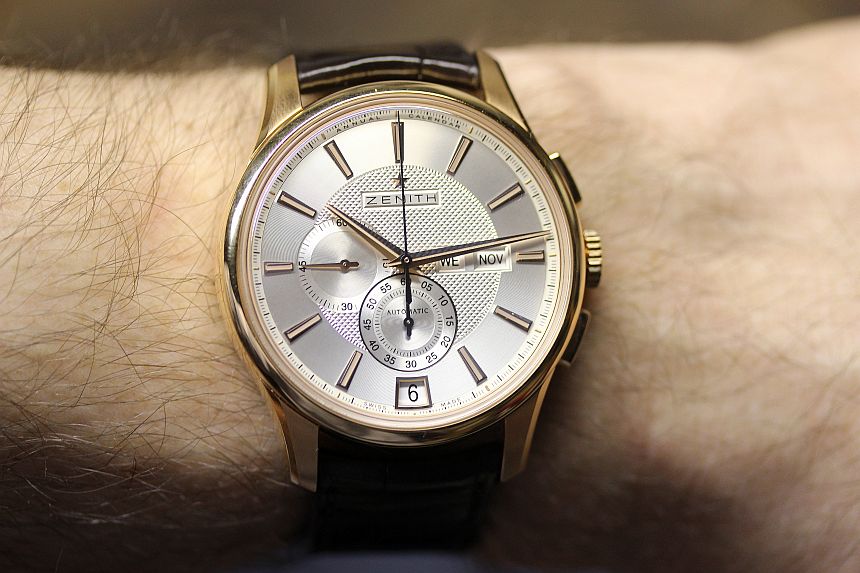
When you think of Zenith watches, what’s the first thing that comes to mind? It’s very likely the term “El Primero,” as that’s been one of the most famous movements (and product lines) in their history. And frankly, after my first exposure to the El Primero, in the form of today’s review piece, I can certainly see why. With it, you get classic styling combined with some very nice functionality, courtesy of the complications included in the movement.
I’ve reviewed quite a few different dress chronographs over the last year, and each seems to have their own particular strengths. With the Captain Winsor, that strength is the realization that, while you might like to have a chronograph in a dressy piece like this one, you’re not going to be timing marathons. As such, you end up with just a single sub dial (at 6 o’clock) to record the minutes (the one at 9 o’clock is the small seconds). This then also frees up the dial over at 3 o’clock to add in another very nice function – displays of the day of week, and month, driven by the annual calendar complication. Combined with the date display at 6, you’ve got everything but your appointment book on your wrist.

As an aside, the annual calendar complication came to be via collaboration with Musée International d‘Horlogerie (MIH) – specifically, their curator Ludwig Oechslin. For more details on the complication, check out Ariel’s writeup here, Paul’s review of the MIH Watch, and then head on over here.
Right off the bat, you can see that we’ve got quite the nice list of functionality, all enabled by the El Primero 4054 automatic movement. Zenith didn’t just go for function however. They’ve created a rather striking timepiece around this movement. All of those functions are set into a silver-tone dial, with a guilloche treatment appearing in the center. This gives a nice bit of texture, and I’d say is a good alternative to a sunburst pattern in the dial.
The faceted indices are made of gold, and the faceted handset is gold plated. This makes for a cohesive color statement with the 42mm rose gold case. It also means you’ve got varied surfaces that catch the light, giving you some flashes of light without the need for gems to be embedded. While I’m generally not a gold watch sort of guy, I did really like this one. I think that’s primarily due to the more coppery color you get out of a rose gold. Additionally, that large silver dial offsets the color, making the gold, in some ways, an accent color, rather than the predominant one.

